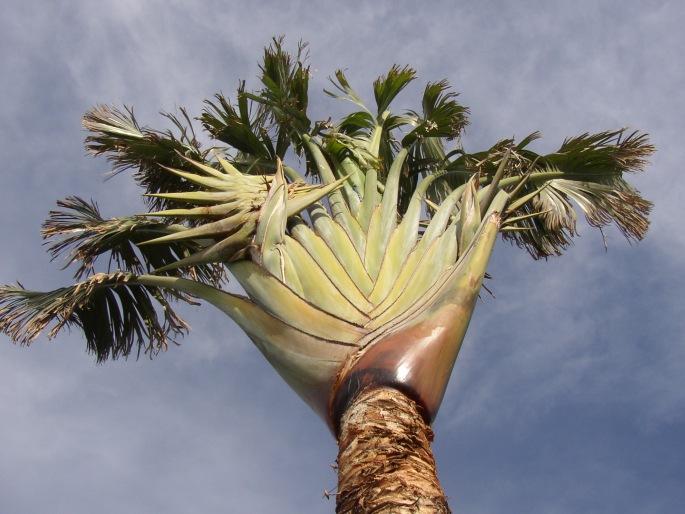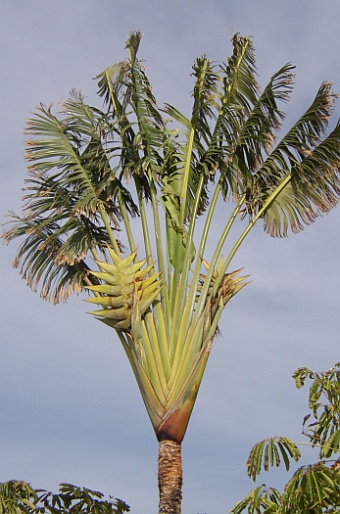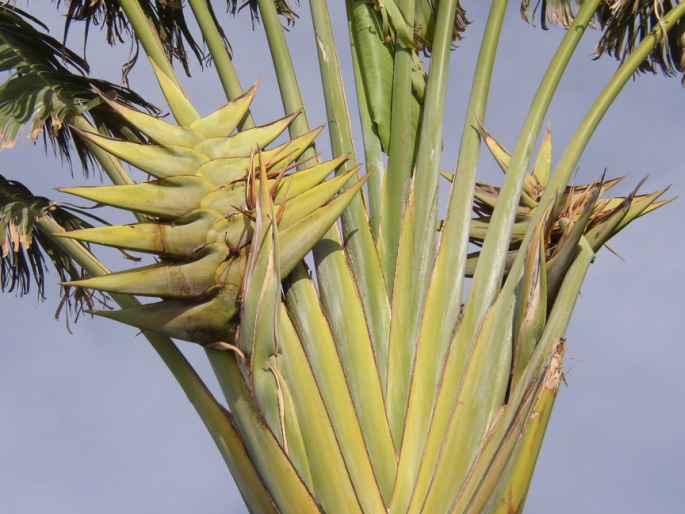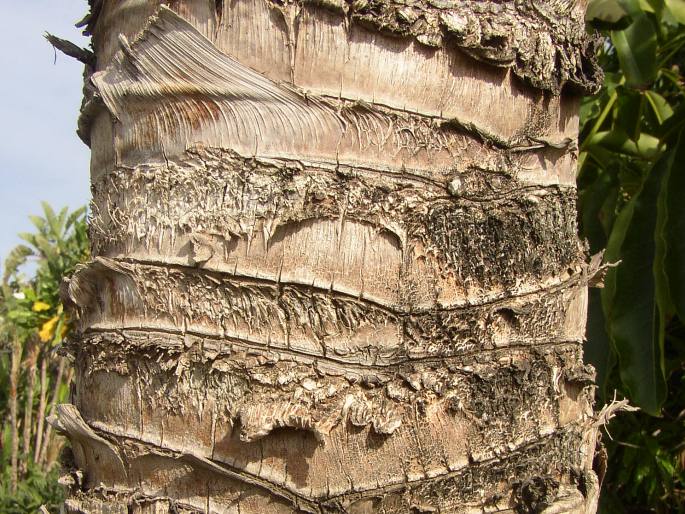Syn.: Urania madagascariensis Raeusch., Urania speciosa Willd.
Family: Musaceae Juss.

Distribution: It is an endemic plant of Madagascar, naturalized in the Mascarenes. This ornamental plant is cultivated in many tropical parts of the world. The monotypic genus.
Ecology: It grows in Madagascar’s rainforests, from sea level up to 450(–1000) metres altitude.
Description: A sturdy herb with a short and palm-like trunk, which is solitary or branched at base, woody, 10–25 m high. The alternate, banana-like leaves are arranged in a fan-shaped crown, the petioles are longer than the blades. The small creamy white flowers are embedded in bracts, they are up to 30 cm long. The fruit is a woody capsule, 2–4 cm long.
Use: The plant has an edible nuts, the young leaves are consumed as vegetable and the seed oil is sometimes used for cooking. The long petioles are used for making of paper.
Note: The common name is derived from the predication that weary travelers would quench their thirst on the rainwater collected in the enlarged sheaths at the base of the leaves. In fact this juice smells bad and tastes horrible, because the water is polluted by organic impurities.




These images were taken in Spain, the Canary Islands, Tenerife, Puerto de la Cruz (March 26, 2006).


